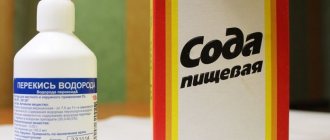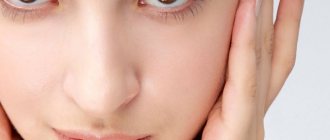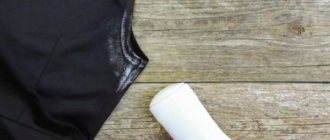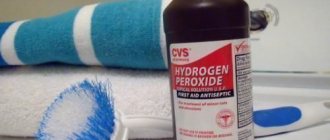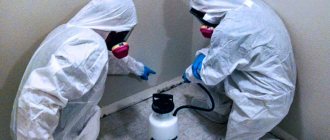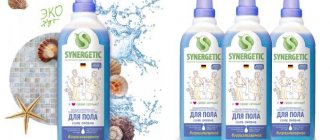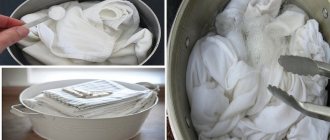Sweating is a physiological function used by the body to naturally cool the body. The process is activated under stress, physical activity, strong emotions and in the heat. Due to sweating, metabolism is regulated, water-salt balance is maintained, toxins and harmful substances are eliminated.
Effect of the drug on increased sweating
Hydrogen peroxide is used as an effective antiseptic for treating various wounds on the skin. The composition of the drug ensures the elimination of pathogenic microorganisms and prevents the development of inflammation. This product can be easily used to treat the feet and palms.
By nature, the secreted sweat does not have a pronounced odor, which can appear only after the development of pathogenic microorganisms on the body. If you use hydrogen peroxide as an antiseptic, then this method will help get rid of the pronounced stench.
This mechanism of action is determined by the fact that during the formation of a chemical reaction, the skin area is disinfected and the epidermis is dried, which gives a feeling of dryness and comfort. At the same time, the resulting comfort is not very long-lasting in comparison with other antiperspirant products.
Possible contraindications
Eliminating the unpleasant odor of sweat and increased sweating involves using hydrogen peroxide in a three percent ratio to avoid severe burns to the skin. For direct application, the following recommendations must be followed:
- Avoid using the drug in concentrated form, as such application can cause burns and excessive dryness of the skin at the site of application,
- Prohibition of applying antiperspirants with aluminum salts to the place where hydrogen peroxide has already been applied,
- When diluted with water, it is necessary to prepare the required amount of solution for one-time use only, since the product interacts well with air and loses its chemical activity.
Before applying hydrogen peroxide, it is important to exclude possible contraindications:
- Individual intolerance to the main components of the composition,
- The presence of increased sensitivity of the epidermis,
- Pregnancy, breastfeeding.
A sharp decrease in the concentration of the hydrogen peroxide solution used is also irrational, since in this case the therapeutic effect of the drug is significantly reduced.
Precautionary measures
Hydrogen peroxide is not suitable for everyone. In some cases it can cause more harm than good. When should you not use this medicine for sweating?
It is forbidden:
- If discomfort, burning, redness, or irritation appear after use, discontinue therapy.
- Not recommended for use on dry skin.
- The medicine must be in the correct concentration. Otherwise, burns may occur.
- Frequent use adversely affects the condition of the epidermis.
- During pregnancy, such treatment is agreed upon with a specialist.
Peroxide will help with mild hyperhidrosis. In case of intense sweating, a visit to a medical facility is necessary.
Hydrogen peroxide for sweating feet and other parts of the body is a good, inexpensive remedy. When used correctly, it will relieve unpleasant odor for a while and dry out the skin. There are contraindications.
Use of the drug
A solution of hydrogen peroxide is used as an effective antiperspirant for excessive sweating in the armpits, palms, and feet. Correct application will eliminate all negative manifestations and any unpleasant odor that may arise.
How to treat armpits
In order to treat the armpits, it is necessary to make a concentration of hydrogen peroxide in a ratio of 1:10. It is best to pre-wash areas of the body, as the antiseptic has a good effect.
Treatment is most often done with a cotton pad soaked in the solution. In this case, the applied product must dry naturally to obtain the necessary therapeutic effect.
This method can be used no more than 3 times a day, and if irritation or excessive dryness of the skin occurs, it is best to choose another safer method.
Lack of use of bath or shower
In some cases, it is not possible to take a full bath, but you can eliminate the unpleasant odor by doing the following:
- Wet a handkerchief with hydrogen peroxide and wipe the necessary areas of the skin,
- Leave the applied solution on for 10 seconds, then rinse and wipe everything dry.
The desired effect is achieved quickly, but at the same time it acts for a short time.
How to treat your palms
Eliminating the unpleasant odor of sweat coming from the palms can also be done using hydrogen peroxide. To do this, apply a few drops of the solution to the skin and rub thoroughly on the surface.
This method is quite effective, but it causes excessive dryness of the skin and thinning of the epidermis, so it requires careful use. If your hands sweat heavily, it is necessary to wash them frequently, since in this case pathogenic microorganisms that cause an unpleasant odor can be eliminated from the skin.
How to treat feet
The degree of concentration of hydrogen peroxide for treating feet depends on the general condition of the skin. A ratio of 1:5 is considered optimal, but if the skin is very rough, you can increase the amount of the active substance.
Application is carried out in two stages:
- The feet are first washed well, cleaned with pumice stone and wiped dry. Then, using a cotton pad, apply a solution of hydrogen peroxide in the prepared concentration. During processing, it is also important not to forget about the interdigital zones,
- After the treated skin has dried, they can be sprinkled with talcum powder or starch of natural origin.
Hydrogen peroxide is considered an effective remedy for unpleasant odor to eliminate negative symptoms, preferably during hot periods. In summer, it is best to wear open shoes made from natural materials.
As a preventative measure, used shoes and sneakers can also be treated with a solution of hydrogen peroxide using a cotton pad.
Ways to suppress off-putting odors
There are no specialized medications that can relieve a person of the problem. The patient must maintain a healthy body that will help regulate the amount of secretion produced. Experts advise adhering to the following rules:
- Reduce the amount of activating foods - reducing pepper, garlic, and onions in the daily menu has a positive effect on the results. Exceeding the permissible volume of spices causes the release of their active ingredients along with sweat, which creates unpleasant odors.
- Follow the rules of hygiene - bacteria that are constantly on the surface of the body do not provoke strong odors. The situation changes when treating diseases with the use of antibacterial agents. When visiting the shower, it is better to use soap or gel without medicinal additives or aggressive synthetic ingredients.
- Check the amount of sugar in the blood - an excess of glucose leads to a similar situation. The same problem occurs with high indoor humidity and hormonal imbalance.
- Treat dysbiosis in a timely manner - without therapy, the issue will remain unresolved. Microorganisms located in the intestinal tract during their vital activity release toxic substances that are excreted from the body along with sweat. To prevent dysbiosis, doctors advise regularly consuming products with lactic acid bacteria.
To reduce sweating rates, it is necessary to select clothes made from natural materials that absorb moisture well. Synthetic fabrics do not allow air to pass through, create a greenhouse effect, and disrupt thermoregulation. Patients must maintain a drinking regime. For a healthy person, the fluid norm is to drink 200 g of water for every 30 cm of height.
List of the best recipes for eliminating excessive sweating with hydrogen peroxide
The effectiveness of hydrogen peroxide can be increased by using various components of natural origin. These tools are discussed in more detail below.
Aloe
Aloe juice has a beneficial effect on the skin and has a softening effect combined with healing properties. Instructions for use are to perform the following sequential steps:
- Cutting a leaf of the plant, chopping and obtaining 2 tbsp. spoons of squeezed liquid,
- Mixing aloe juice with 1 tbsp. A spoonful of hydrogen peroxide and 125 ml of water at room temperature,
- The resulting solution can be used to wipe the affected areas of the body. The product is quite effective as a compress. To carry out the procedure, apply a moistened gauze bandage to the foot, palm or armpit and leave for 3 minutes.
By regularly carrying out such procedures, you can quickly achieve the desired effect and eliminate all the negative symptoms of increased sweating.
Glycerol
Glycerin is an effective agent in preparing foot baths. Recipe:
- Mixing 50 ml of hydrogen peroxide with one tablespoon of glycerin,
- Preparation of a special container with water in the amount required for washing the limbs,
- Pour the prepared mixture into water and directly carry out the procedure. After washing your feet, you need to dry them well and put on cotton socks to get the desired effect.
Soda
Soda effectively eliminates the negative manifestations of hyperhidrosis and prevents severe keratinization of the skin. Algorithm for using the product in combination with hydrogen peroxide:
- Taking a foot bath with warm water for 10–15 minutes,
- Separately prepare a solution with the addition of 2 teaspoons of soda and 2 tablets of hydrogen peroxide,
- Add the prepared mixture to the previously prepared bath and stir thoroughly,
- You need to soak your feet in the resulting solution for another 10 minutes, and then wipe them dry and put on socks. It is best to carry out this procedure before bedtime.
If, when using this method, irritation appears on the skin, then you must stop using it and also consult a doctor.
The appearance of increased sweating is a sign of a change in the physiological state of the body or the development of various pathological diseases. In case of pronounced symptoms and their frequent repetition, it is necessary to go to the hospital and identify the cause of the discomfort.
When using hydrogen peroxide, it is worth understanding that this product does not affect the elimination of increased sweating and has a temporary therapeutic effect, therefore it is recommended to select effective antiperspirant agents and, if necessary, treat the identified disease.
Reviews
Reviews about the use of hydrogen peroxide to eliminate the unpleasant odor of sweat are mostly positive. Many people received the expected effect when using proven means.
As soon as summer begins, I experience severe sweating in the armpits, feet and palms. Recently I started using a three percent solution of hydrogen peroxide, and it turned out that this product helps effectively. After application, the skin becomes dry and the unpleasant odor disappears. You can also add glycerin to soften the skin.
Marina, Taganrog
For me, too, it all started with the skin in my armpits and palms starting to sweat a lot. At first I didn’t pay attention, but the symptoms only began to worsen. After going to the doctor, minor hormonal changes were revealed. Now I am undergoing treatment and using hydrogen peroxide as a preventative measure. This product helps a lot, and is also absolutely inexpensive.
Svetlana, Kirov
What is hyperhidrosis
According to statistics, about 15 percent of the total population of the planet suffers from excessive body sweating today. The process of sweating is vital for the human body, since together with the secretion secreted by the sweat glands, our body gets rid of waste and toxins. Thanks to the secretion of sweat, the function of heat exchange in the body is also carried out.
Most often, the volume of sweat produced increases with increasing air temperature and during active physical activity. However, if a person constantly sweats, even at rest, and the sweat literally flows like a stream, doctors diagnose hyperhidrosis - increased activity of the sweat glands.
Excessive sweating significantly complicates life - wet clothes in the armpits, chest and back, as well as the unpleasant smell of shoes create enormous discomfort even for a very confident person.
Excessive body sweating can be caused by a number of reasons:
- Increased emotional excitability - even slight excitement can cause profuse sweating,
- Kidney disease
- Liver pathologies,
- Diabetes,
- Hormonal disorders
- Genetic predisposition.
At the first signs of hyperhidrosis, it is recommended to visit a dermatologist who will conduct an initial examination, prescribe the necessary examination followed by a course of treatment, and, if necessary, the doctor will refer the patient to a highly specialized specialist.
